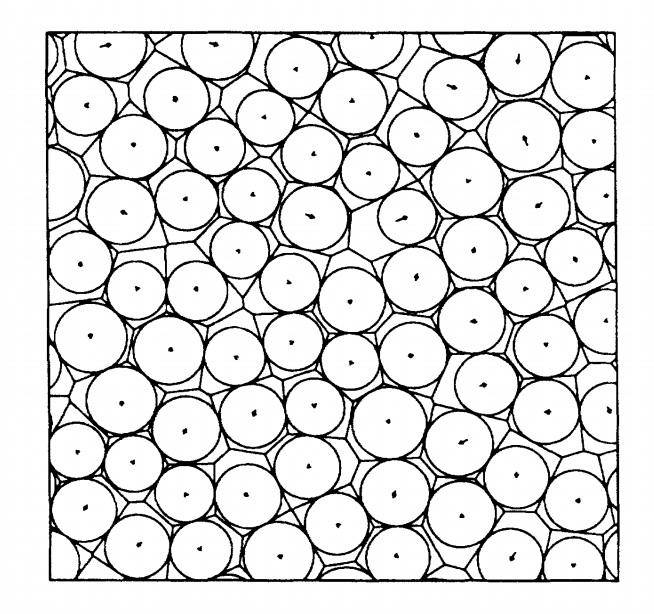The problem of the expected density of a saturated random packing of unit circles in the plane can be described as follows.
In a circular region $C$ of a large radius pick a point at random and draw a unit circle centered at the chosen point. Then pick another point in $C$ at random and draw again a unit circle, centered at the chosen point. If this circle overlaps with the previously drawn one, discard it and pick another point in $C$. Continue this process until the probability of finding one more point in $C$ for which the unit circle drawn about it does not overlap with any of the previously drawn circles is zero. The density of such packing of unit circles in $C$ is computed as the sum of the areas of the unit circles divided by the area of $C$. Let $d(C)$ denote the expected value of the density, and let $d$ denote the limit of $d(C)$ as the radius of $C$ tends to infinity.
Numerical experiments indicate that $d$ should be around $0.82$ (see for example https://www.sciencedirect.com/science/article/pii/0021979771903389), but, to the best of my knowledge, the exact value of $d$ is unknown. Are there any rigorous results obtained in this direction? Any reasonably good estimates, perhaps? Any references will be appreciated.


